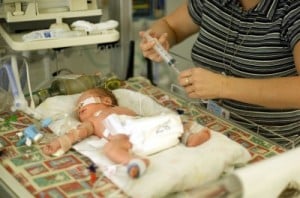
Cerebral palsy is a condition where the baby has permanent impairment in the body balance, posture and movement. In some children this might be mild with smaller movement restrictions while in others it may also involve mental retardation, hearing problems, or vision problems.
The study, which was conducted in Denmark by Dr. Dorte Hvidtjorn, of the University of Aarhus from the year 1995 till 2003 where 590,000 children born in the country through fertility treatments and through natural method were studied. Of these 33,139 kids were conceived through artificial insemination treatments like IVF or through fertility drugs that helped the ovaries produce eggs. It was found out that the kids who were conceived through artificial methods had double the cases of cerebral palsy than others born naturally.
However the absolute risk of having a child with cerebral palsy when couples used fertility treatments was very low. The chances only increased when there were multiple births involved or there was preterm delivery. In the US and Europe there are only one to three in 1000 children that cerebral palsy may occur with artificial reproduction methods of a full term, single birth infant.
The latest findings have been reported in the Human Reproduction journal and it only confirms past research on the matter. The reason for cerebral palsy cases is still unknown although it is believed that the fetal brain development is disrupted when there is preterm delivery or multiple births leading to the condition.
What the researchers of Denmark were able to pin point was that double the number of cerebral palsy cases occurred with IVF treatments and with fertility drugs it was 55 percent more than natural conception. When they removed the cases of multiple birth and preterm deliveries, the number of cases was almost the same in both groups. This led to the result that single children born through artificial methods, were not at risk of cerebral palsy.
They have now concluded that it is better to transfer just one embryo to the mother’s womb and ensure a normal delivery that higher the risk of cerebral palsy by transferring more than one embryo leading to multiple births or preterm deliveries. – Atula, Staff Writer
- Tiniest Infant Survives Liver Transplant
- One Pound Three Ounce Baby Survives The Odds
- Routine Housework May Lead To Premature Babies says Research







This article is very helpful. Thank you landlord.